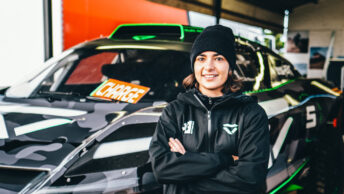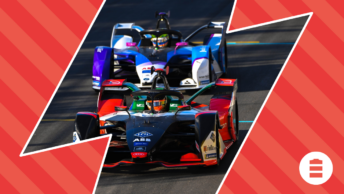I feel like I should really be much better adapted to lockdown than I am. I’m always on the internet, I barely saw my friends and family anyway because of being away all the time and I thought of Twitch as what you put on the telly for a normal evening in already.
It’s not a revelation to say this is a really weird time for sports. I am acutely aware of it, as a sports journalist – and that the stand-in online championships and tournaments aren’t filling the space left by their real-world analogues. But it’s not a simple time for esports, either and the uneasy transition is two-way.
You might be surprised to hear that esports are currently struggling with organising themselves. I mean, it’s just computer games online, right? That should be the easiest thing in the world to organise right now.
Well, no: although some levels of pro esports are played online, they’re normally with the teams themselves located in a single room or at least in the same territories so when they connect to a server, everyone has the same ping. Professional esports are won in the speed of clicks that are counted in similar measurements to motorsport – the hundredths and thousandths of a second being key – so if you’ve got 0.3s lag from being in South-East Asia when your teammates are in CIS and you’re all connected to a server for Europe then that’s not going to end well.
It’s why the big tournaments have always been played by LAN, even though roping computers up together to whack each other on computer games might seem deliciously 90s to anyone else old enough to remember Quake on dialup. It means you guarantee the PCs are clean and unmodified but most importantly it means lag stops being an issue. So the IRL nature of esports has actually always been important and not just cus bellowing at your team to stop dying in a stadium full of other Dota nerds is a pretty good weekend, as a fan.
Events are still going on but being kind of scrambled together, casters and observers dialling in and teams reorganising rosters, benching star players and rearranging roles based solely on connection speeds or even just ability to connect at all. Plenty of esports players ironically find themselves isolated away from their equipment or a good internet connection while real-world sports stars are suddenly turning up online.
It’s severe enough that some of the top players aren’t taking part, refusing to play with bad ping. And the tournaments have a weird air to them – it’s not like Discord is a new idea for esports but that everyone’s so helplessly reliant on the chat functioning to coordinate a broadcast is. And casters (esports commentators) are piped in via Zoom or Google meets, event sponsor logos either artfully draped around them in a Streamlabs overlay or hastily pinned to their bedroom wall via green screen.
Given that, it might seem kind of overambitious that real-world sports are trying to break into the virtual, from a cold start. Without (or with very limited) previous experience using sim racing platforms to hold races, they need to come up with the equivalent of an FIA rulebook on the fly, then adapt it to circumstances even an esports league would struggle to work around.
Sim racing, motorsport’s computerised parallel, is actually pretty well-set-up for that, since competition is entirely held online, bar a handful of headline and real-world-series-backed events. F1 Esports, World’s Fastest Gamer and the FIA Gran Turismo championship all hold real-world meets, as have some one-off events like Formula E’s tragicomic Las Vegas eRace of a few years ago but the vast majority of serious sim racing is done exclusively over the internet, in iRacing and rFactor community-organised events and teammates not being on the same continent is a regularity.
It’s a fact that has slightly held sim racing back from the pots of cash other esports have dove into, Scrooge McDuck style. Ironically, sim racing is one of the most impoverished esports in terms of prize pool sizes – the publishers of iRacing promised an unprecedented $300,000 to be paid out in prizes over the course of 2019. Riot Games, the publishers of League of Legends, made $2.2 million available as just their contribution (the pool is additionally flooded via sales of specific in-game items) to the 2019 League World Championship prize – the biggest tournament in the year, yes but still a single event.
The fact is sim racing is kind of for nerds and that’s mostly how people like it. But despite increasing professionalism in presenting the sport for Twitch and YouTube broadcasts, often better than some real-world coverage, it ironically doesn’t attract the car brand sponsorship that litters Overwatch and CS:GO players’ team gear.

So with the motorsport world’s eyes finally turned to it, rather than treating it like an embarrassing distant cousin to pursue marketing elsewhere, how does sim racing come out of the attention? The answer is, unfortunately: not very well.
That’s not sim racing’s own fault. The standard in “true” sim racing championships remains high – whether at a serious sim level (iRacing and rFactor) or the more specifically arcade-y F1 games or Gran Turismo. Championships are well regulated, including licensing systems and there are serious and committed racers whose competition produces the same sort of brilliance, in terms of track action, that we are used to seeing at the top level of a sport.
Comparatively, the fact is that the majority of the real-world championships’ stand-in series have been semi-disastrous. Running sim racers against real-world competitors immediately makes Grand Prix winners look like they’ve never heard of a car before, left seconds behind and running the drivers themselves exclusively produces amateurish pile-ups as games glitch and some of them, perhaps, take it less seriously than others.
Even worse, invitational celebrity races look dire – damage turned off, they attract the highest viewers with star-studded grids but make a mockery of the competitive esport they’re essentially trespassing on the territory of.
It’s not like I’m against fun – I have rarely experienced a serotonin high like watching Formula 1 drivers yeet lawnmowers into each other – but most of what’s happening can’t be called sport. From taking away setup options to making it possible to hit a wall at top speed and carry on, the “pro diver” sim racers look the part, with top-spec racing rigs prominent on every amalgamate Zoom call but the on-track action isn’t far off me hurling the Xbox controller at Devon Butler.
This might seem like a stupid thing to say but: not all gaming is esports. Me failing, in an increasingly catastrophic way, to qualify for a race in F2 career mode on F1 2019 is not esports – regardless of how accurately it may, coincidentally, portray my likelihood of IRL success.
Real-world motorsport has raised sim racing’s profile very considerably over the last few months but in a backhanded way. By primarily showcasing the relative lack of skill of real-world racers in a virtual setting, it flags that, yes, sim racing might very nearly look like the real thing, if we dress up the broadcasts cleverly but it’s not.
And of course it rubs both ways – it got the better of Simon Pagenaud during an Indycar iRacing event when highly experienced iRacing driver (and genuine sim racing competitor) Lando Norris got the better of the entire Indycar pack on an oval, allegedly using moves allowable in the game but not real life. Pagenaud then broke the in-game rules by deliberately crashing him out of the lead, after slightly foolhardily announcing he was going to do so on Twitch.
Norris, much more experienced with both getting pelted with negativity in his Twitch chat and computer-game-induced frustrations leading to online embarrassment, took it fairly well. But his – and the broader F1 – fanbase didn’t and the incident boiled over into extensive harassment of both Pagenaud and Indycar from restless real-world motorsports fans dying to find something to argue over, in lieu of racing.
Formula E waited to launch their championship, whose aim is to raise money for UNICEF and to be entertainment, with a separate, competitive sim racing series from the real-world drivers. Some teething issues aside – and the fairly dubious decision to mix the sim racer grid with a few real-world reserve drivers, way out of their depths – the Challenge Grid has been great to watch and “proper” sim racing, with nail-biting competitions.
But it’s the actual Formula E grid racing that are making it to, say, the BBC Red Button. Where a handful of fairly skilled drivers are dominating – understandably – amidst shambolic-looking incidents that make rFactor as a competitive platform (the casual viewer would be forgiven not researching detail races can be specified to) and the pomp of proper sim rigs and setup look a bit, unfortunately, ridiculous.
Real-world racing will come back, at some point. It will be weird at first and we’re all going to have to try new things to make it work. But it’ll happen and steadily the schedule will flesh out and before you know it, it’ll be all-quiet on the “F1 driver tries to recreate gourmet Grand Prix overtakes” content front.
What shouldn’t happen is that that leaves sim racing poorer – or with a lowered reputation as a competitive sport. That has to be at least on the radar of concerns, though.
With new real-world series’ virtual parallel championships starting each week, it’s fun seeing the drivers get going, even down to helpless Discord pleas for tech support. And a lot of them have raised tremendous amounts for COVID-19 relief and I don’t think any of the championships moving online have anything but sincere intentions to try and produce racing under impossible circumstances.
Drivers having a go at it have to be given fair play; most of them have never done it before and even the ones that have are often ending up playing on games they don’t like or are massively less experienced with. And real-world motorsport and sim racing definitely don’t live in opposition – true sim systems can be used to preserve heritage and hold races not possible in reality, with plenty of people from sim racing fans of motorsport and vice versa.
Maybe it’s the inherent environmentalist in me handwringing but it would be nice to see series planning not only for how they can exist in the virtual world but for sustainability there after they go AFK.





